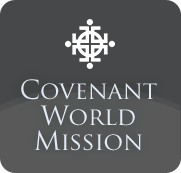This chapter expands and goes into great detail about the participation level of the community that is being served in the process of determining and implementing a strategy for poverty alleviation. The authors provide a continuum where they show the various levels of participation. It begins with “Coercion” where local people submit to predetermined plans developed by outsiders. A good step in the right direction is “Cooperation” where local people work together with outsiders to determine priorities but the responsibility still remains with outsiders for directing the process. At the other end of the continuum is “Community Initiated” where local people set their own agenda and mobilize to carry it out without outside initiators and facilitators. So you can see the vast disparity in these different ways of achieving participation.
One particular aspect to the idea of participation that stuck out to me was the need to talk to everyone in a community that is being served. It was amazing to see an example where this was done properly and both the men and the women in a poor community were asked to draw a map of the community. The maps the drew were so different you couldn’t even tell that they were the same community.
In the end, this chapter highlighted an area that had been stressed previously but was very correctly expanded and given more sustenance through examples. It’s obvious to see the need for the participation of the community that is being served.





 The Santiago Partnership
The Santiago Partnership